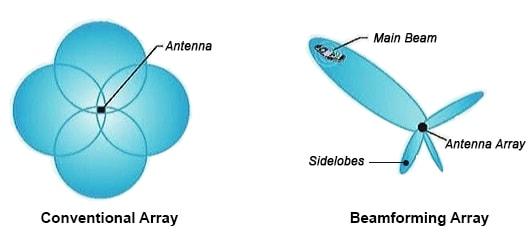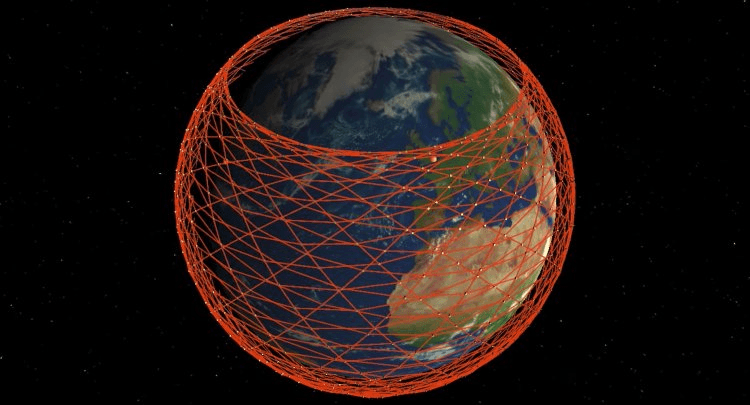5G and Starlink: a new era in internet connections
5G and Starlink are two complementary technologies whose goal is to make the entire planet connected ensuring efficiency and versatility to network applications.
5G
5G indicates a set of latest generation technologies that stands as evolution compared to 4G and promises a new era in internet connections. The global diffusion, started in 2019, has caused a stir from the media point of view.
The goal with 5G is to meet the increase in transmission speed low latency (the response speed of a system to a pulse) and high density (simultaneous access to the network without impacting on speed).
5G is therefore characterized by:
-
Beamforming or the possibility of directing and concentrating the signal towards the actual physical position of the users. Therefore, the antenna will not have a constant emission but will adapt according to the users to be served. The antennas used for this approach are called mMIMO (massive Multiple Input Multiple Output)

-
Low band antennas with a frequency range between 694 and 790 MHz, mid band with a frequency range between 2.5 and 3.7 GHz and high band with a range frequency range between 25 and 39 GHz. The wider the frequency range, the lower the antenna range. The 5G in the medium band, by far the most common, reach very high speeds obviously at the expense of the range compared to a low band.
-
Low latency. The variables and disturbing factors affecting a 4G antenna are the same as affecting 5G ones. The aspiration would be to be able to reach an air latency of 1ms-5ms.
-
Speed Boost: Midband 5G speeds are slightly faster than advanced 4G networks. In fact, the 4G network is still close to the Shannon limit but lower than 5G. Using Shannon’s theorem:

-
C: Throughput capacity of the system
-
B: the width of the band given by the
frequency * antennas number. 5G uses a wider range of frequencies and more antennas and this means that the size B is greater than that of 4G. -
S / N: Signal to Noise Ratio (or SNR) is a numerical quantity that relates the power of the useful signal to that of the noise in any acquisition system, processing or transmission.
-
Starlink
Starlink, despite having been less successful in the media, is the patron of what will be a very near future in which everyone will be connected anywhere in the world. This satellite internet connection project, the fruit of Elon Musk’s visionary mind, aims to offer instant activation times and costs that are expected to be revolutionary.
Starlink is in fact a constellation of satellites in LEO (Low Earth Orbit, an orbit between 300 and 1000 km), more precisely at 550km, which work in tune with terrestrial transceivers for internet access via satellite in broadband and low latency.

Starlink’s goal is therefore to bring the internet not only in densely populated areas but also in the most isolated places on our planet.
At the moment Starlink has about 700 satellites launched in non-geostationary orbit and the first constellation will count about 1600 satellites.
The Starlink satellites are equipped with:
-
A thruster that uses Krypton to hold its orbit automatically and avoid collision with debris.
-
A solar panel capable of powering all routers.
-
A set of lasers. Although none of the approximately 180 Starlink satellites launched so far have been equipped with lasers, the intention is to use them as a means of finalizing a “backhaul” network. The goal is to optically connect nearby satellites to find the shortest path between any two stations on earth. This has significant productivity advantages over traditional terrestrial fiber optic links as the speed of light in glass is approximately half that in vacuum. In theory, Starlink connections have the potential to greatly reduce the latency that exists in terrestrial connections.
Conclusion
According to Statista the number of active internet users in July 2020 was nearly 4.57 billion.
When Starlink is active and 5G will be more accessible, there will be a significant growth in internet traffic. This will mainly be due to being able to connect anywhere in the world and at any time with excellent browsing speed.
For this reason, companies will have to adapt their sizing to traffic capacities different from the current ones. Sizing is in fact, as reported in the article Coronavirus: IT infrastructures must adapt sizing, a key factor to ensure operational continuity and reliability in the provision of services.
Oplon ADC (Application Delivery Controller) ensures robustness and scalability in vertical and parallel distributed architectures.